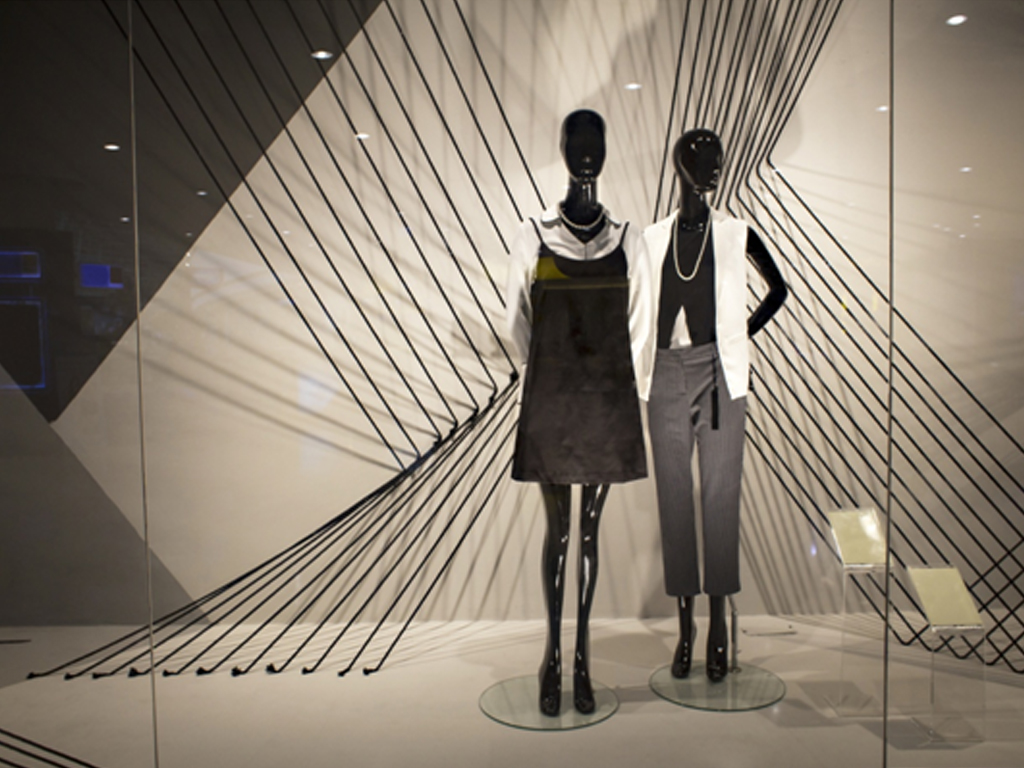

Visual Merchandising is the art of displaying merchandise in a manner that is appealing to the eyes of the customer. It sets the context of the merchandise in an aesthetically pleasing fashion, presenting them in a way that would convert the window shoppers into prospects and ultimately buyers. A creative and smart retailer can use this upcoming art to breathe in new life into store products. Passion for design and creativity are essential to be a good visual merchandiser. A perfect design process and the ability to create ideas that are different are required. Awareness of happenings in fashion world is needed so as to keep up-to-date with the dynamics of the market constantly.
Visual merchandising includes window displays, signs, interior displays, cosmetic promotions and any other special sales promotions taking place.
Today, the front window is heavily regarded as the soul of the store, the first impression that draws shoppers in. But that is not where the work ends. Once inside, the store itself should exude a specific artistic presence known as visual merchandising.
Like a painter’s brushstrokes, merchandising is not only a physicalform of artistic expression, rather it’s an emotional one – making the shopping experience memorable long after the visit has come to an end.
Like any other medium, this ephemeral form of art possesses certain attributes that define yet differentiate it from other creative expressions. But as consumer tastes evolve and become more demanding, merchandisers must continually re-evaluate the role of contemporary visual merchandising strategies.
One of the surest way to do this is to understand the foundation of visual merchandising – from the principles of visual research to the subsequent analysis of the results, in regards to both the brand image level and product sales.
There is a plethora of skills required in VM that can be learned – organisation and self-management, communication and interpersonal skills – however, the innovative and creative aspects come to those with an inner gift. While the ability to execute design is more academic, the intelligence needed to conceptualise these visual creations is not something easily taught.
There are four major visual merchandising messages: critical, reflective, testimonial, and exaltation. Within these messages lie manifest, codified, or intellectual concepts.
When you dive deeper into these concepts, personal themes may emerge that express feelings, ideals, motivations and experiences. Likewise, environmental themes including political, religious or philosophical ideologies of individual creative directors may also exist within their creations.
Most brands, however, tend to shy away from statement-making displays. Visual merchandisers have the responsibility to express the principles and values of the client.
In its format, both the store’s exterior and interior showcase a storyline. This visual storytelling is similar to that of an artist’s rendering – with regards to composition, proportion and lighting. However, artistic techniques and disciplines are only the means expression, not the art itself. Consider the differences between photographic and digital art.
The work of visual art in the recent past has been influenced by the artistic styles that have defined certain aesthetic, conceptual or ideological characteristics shared and assimilated in certain eras.The styles arise first in a specific location by one or several artists with a certain degree of influence. It is then exported to other areas where they may undergo a certain transformation to fit within those confines.
Though dependent upon a viewer’s perspective, visual art, regardless of the medium, has a purpose and value. Artworks acquire value for their proposal or innovation.
Transcribing styles of a particular era, expressing the ideals and idiosyncrasies of a place, time or brand, and the ability to approach certain themes are skills required of visual merchandisers and artists alike.Furthermore, because retailers are dependent upon visual merchandising in order to maximise sales that, in itself, is the highest value.
Visual merchandisers who create a complete visual strategy are artists in their field and their creations – from window dressing to online stores to merchandising – this is already an art.